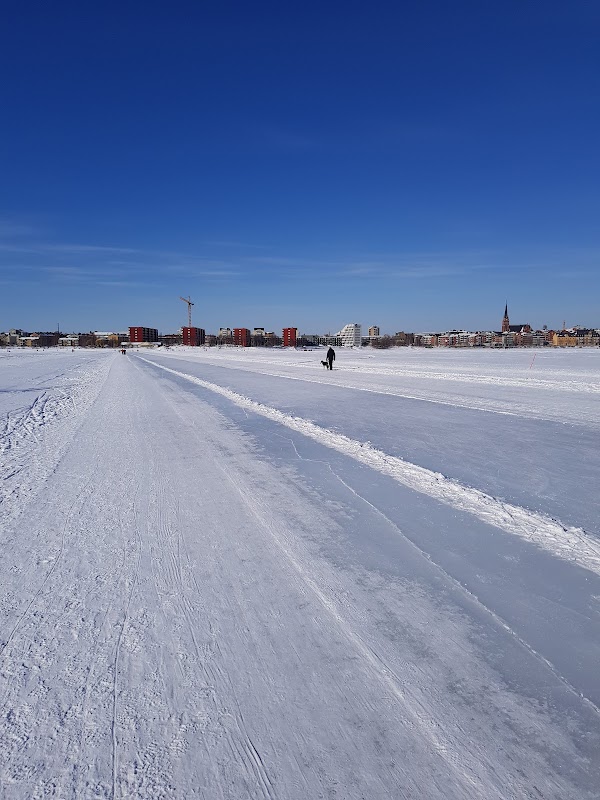
The Torneå Marathon invites adventurers to test their endurance along a unique trail hugging Finland's northern border. Combining steady terrain with natural beauty and local culture, this marathon offers a well-paced challenge infused with the quiet power of Lapland’s forests and rivers.
Hydrate Consistently
Carry water with you even on cooler days, as the dry northern air accelerates dehydration during long runs or hikes.
Choose Trail Shoes with Grip
Select footwear suitable for a mix of gravel and soft mossy paths to maintain stability and reduce injury risk.
Plan Around Daylight
Schedule your marathon between June and early September to take advantage of long daylight hours and safer hiking conditions.
Pace Steadily
Focus on consistent pacing rather than speed to manage endurance through the marathon’s nearly flat but lengthy route.
Torneå Marathon: A Practical Guide to Finland's Northern Trail Adventure
Stretching alongside the Finland-Sweden border, the Torneå Marathon offers runners and hikers a unique blend of endurance and elemental beauty. Covering 42.2 kilometers through primarily flat terrain with subtle elevation changes totaling around 250 meters, this route moves with a steady pulse that tests stamina without overwhelming. The ground alternates between packed gravel and natural forest paths, with occasional bouts of soft moss that invite careful footing. Early in the morning, spruce and pine trees crowd in, their branches whispering and stretching to brush the passing traveler, urging forward. Meanwhile, the Torne River runs parallel at times, daring adventurers with its powerful current and silvery expanse.
Unlike mountain marathons, Torneå’s challenge lies in its steady endurance, where mental grit pairs with physical readiness. Trail shoes with reliable grip are essential for the various surfaces, while layered clothing protects against the unpredictable northern weather. Hydration stations mark every 5 kilometers during event days, but for training or solo runs, carrying water is a must—the crisp air can mask how quickly the body dries out.
Participants pass through small villages, offering a glimpse into local culture and the quiet pulse of Finnish Lapland life. The trail's northern location means daylight can be generous in summer but fleeting outside of it, so timing runs between June and early September provides the best light and conditions. Spring's thaw can leave parts of the path soggy, demanding waterproof boots and patience.
For those who prefer to approach the Torneå Marathon as a hiking challenge, pacing is crucial. The constant interaction with the natural surroundings—the river’s dare, the forest’s quiet coaxing—turns distance into dialogue. This marathon isn’t about domination but engagement with a landscape fiercely itself, a vast stretch that rewards respect and sensible preparation.
Ultimately, succeeding here means balancing enthusiasm with pragmatism: tracking weather, training for steady endurance, and packing smart. Whether you’re chasing a personal best or moving at a deliberate pace to soak it in, the Torneå Marathon presents an experience that comes alive in movement and mindful attention.
Nearby Trips
All Adventures
Boat Charters
Water Activities
Adventures near Torneå (Tornio), Finland
Discover the unique and memorable adventures that make Torneå (Tornio), Finland special.
Frequently Asked Questions
What makes the Torneå Marathon route unique compared to other marathons?
It’s one of the northernmost marathon routes, running alongside the Torne River with a landscape that shifts between dense forest and open river views. The terrain is mostly flat but demands steady endurance, unlike steep mountain marathons.
Are there water stations along the marathon route?
During official race events, water stations appear roughly every 5 kilometers. Outside event days, runners or hikers must carry their own water to stay hydrated.
When is the best time to run or hike the Torneå Marathon?
Late June through early September provide the best balance of daylight, weather, and trail conditions. Summer’s long days are ideal, while spring may leave soggy patches and winter trails are snow-covered.
Is the terrain technically difficult?
The terrain is moderate technically, mostly flat gravel and forest paths. Some mossy patches require care, but no advanced skills are needed beyond basic trail navigation.
What wildlife might you encounter on the trail?
You could see elk tracks, occasional reindeer, and a variety of northern birds, including hawks circling overhead. Mosquitoes and flies increase in summer, while winter signs include animal tracks in snow.
Are there cultural or historical points of interest nearby?
The route brushes close to small villages with Sámi heritage, and the river itself has historical significance as a traditional border and trade route between Finland and Sweden.
Recommended Gear
Trail Running Shoes
Offers grip on varied terrain including gravel and moss; protects against slips.
Water Bottle or Hydration Pack
Maintains hydration during the long course where natural water points are scarce.
Lightweight Windbreaker
Protects against sudden wind and chill, especially in open river sections.
Insect Repellent
Necessary during peak mosquito months to maintain comfort on forest stretches.
Local Insights
Hidden Gems
- "Small riverbank clearings where one can witness the river daring the forest to edge closer"
- "An abandoned mill site visited along a side trail that captures local history"
Wildlife
- "Crepuscular elk crossing quietly at dawn or dusk"
- "Northern hawks patrolling the skies with intent"
- "Migratory birds using the river corridor as a flight path"
History
"The marathon path mirrors historic trade routes along the Torne River, a natural border and cultural meeting point between Finland and Sweden, embedded with Sámi traditions."
